LODI RULES in Sustainable Farming
So, you want to learn more about Lodi wine region?
Are you are interested in California wine? If so, chances are you’ve been on the up and up with what’s happening in Lodi. A fantastic climate, strong traditional roots, and multiple generations of winegrowers are paving the way for sustainability measures. This has led to the creation of the LODI RULES seal, a green stamp appearing on the back labels of certified wines much as you would find a “USDA Organic” sticker. Click here to see which of our Lodi wine grapes are LODI RULES certified –> LODI RULES – Musto Wine Grape
As California’s original sustainable viticulture certification program, this seal is representative of a producer’s commitment to stewardship and respect for the land. It is a symbol of transparency in all things related to sustainable viticulture. The certification does not approve only one aspect of winemaking. It looks at the whole of the process, from farm to vine to bottle. While over 150 wines bear the LODI RULES seal, not just any winery can use this seal on their labels. The wines must have 85% certified sustainable grapes and be able to prove this. This then gets confirmed through third party accreditation and auditing.
There are two layers to the accreditation
1. Wineries must agree to “The Standards” of the certification, which include 100+ sustainability measures, in addition to following a unique pesticide risk model. The Standards are comprised of sustainability related to
- business
- human resources
- ecosystems
- soil
- water
- pests
2. Wineries must follow the Pesticide Environmental Assessment System (PEAS), used to gain an understanding of the impact of pesticide use within the vineyard. This is then used to generate a quantifiable environmental impact unit through which the effects and range of pesticide application can best be understood within the local ecosystem.
The Lodi AVA is setting a fantastic example by supporting the land that retains some of this country’s oldest vines. Lodi Rules is imparting a new standard in its meticulous regulations, leading other wine regions following suit after realizing how successful this certification has been for the region. Keep up to date with the progressive measures this winemaking region is taking to best care for their land, and be sure to look for the LODI RULES label on your next Lodi bottle. And this fall, be sure to find your very own Lodi wine grapes here at Musto Wine Grape Co.
2019 Winemaking Class Schedule – *UPDATED*
Musto Wine Grape’s Updated Winemaking Class Schedule
Oak Alternatives Class
- Saturday August 17th at 10:00AM
- Cost: $4.99 + tax
- Link: http://www.juicegrape.com/oak-alternatives-class/
Fermentation Planning Class
- Saturday August 24th at 10:00AM
- Cost: $4.99 + tax
- Link: http://www.juicegrape.com/Fermentation-Planning/
Making Consistently Flawless Wines with Daniel Pambianchi
- Focused in fermentation science, both alcohol and malolactic, understanding and managing pH and TA changes during fermentation, and advanced wine analysis skills.
- Saturday September 7th
- Cost: $250.00
- Link: http://www.juicegrape.com/Seminar-Daniel-Pambianchi/
Winemaker Bootcamp
- Musto’s hands on winemaking class. Learn how to make wine in class from start to finish.
- Session 1: Starts Saturday September 21st – 9:00AM-12:00PM for 5 consecutive weeks
- Sessions 2: Starts Saturday October 19th at 1:00PM-4:00PM for 5 consecutive weeks
- Cost: $150.00 for class
- Cost of Adding Grapes: TBD – depends on which grapes the class is working with. You will find out the this cost the day of class
- Link: http://www.juicegrape.com/EDUIBL-5-WEEK-WINEMAKING-BOOTCAMP/
Winemaking 101
- Learn the basics of making wine at home
- Date: TBD
- Cost: $75.00
- Link: http://www.juicegrape.com/Education-Intro-to-Wine-Making-101/
Winemaking 201
- Learn the basic lab skills needed to take your winemaking to the next level
- Date: TBD
- Cost: $75.00
- Link: http://www.juicegrape.com/Education-Intro-to-Basic-Lab-201/
We look forward to seeing you in class! Please email Christina at cmusto@juicegrape.com with any questions about our winemaking classes.
Grower Jeff Bitter talks about Veraison in his vineyard for Musto Wine Grape Company Winemakers
It’s that time of year again!
Our grapes are going through veraison in California.
Veraison occurs when the berry transitions into the ripening stage. From now forward the berry will increase in sugar concentration until it is harvested at the desired brix level. Grapes for sparkling wine or champagne are harvested around 17 brix and grapes for still wine are harvested around 25 brix. The brix level will determine the alcohol level in the wine. For example, a grape picked around 25 brix should create a 12.5% alch by volume wine.
Check out our video with Grower – Jeff Bitter as he walks us through his vineyard, verasion, and what he has been working on in the vineyard thus far.
Veraison in the Vineyard with Jeff Bitter for Musto Wine Grape Co. LLC.
Email Sales@Juicegrape.com or call 877-812.1137 for more details
about the 2019 Harvest!
How to Make Tempranillo Wine
Taking on Tempranillo
This thick skinned complex berry bomb will fill your palate with notes of ripe red cherry, blackberry, baking spices, strawberry jam, cocoa powder, tobacco, and black pepper. A fresh, vibrant, meaty wine ready to be drunk young or cellared for extra complexity. Sounds delicious doesn’t it?
Wine breakdown: Fruit forward with earthy qualities, usually oak aged 6-18 months in French or American Oak, med (+) tannin, med (-) acidity
Yeast Suggestions: VRB yeast is our top suggestion due to its consistent fermentation rate and enhancement of flavor complexity while softening tannins. This yeast helps improve the mid-palate structure, showcase black and red fruit flavors, and works well with malolactic fermentation. Originating from Logroño, Spain this yeast is the perfect pairing to your Tempranillo fermentation.
Tempranillo Available this Fall:
– Grapes from King’s River Ranch, Sanger, CA
– Grapes from Lanza-Musto Vineyards, Suisun Valley, CA
– Juice from Central Valley, CA
Winemaking Tips: We suggest the addition of the following additives when working with Tempranillo
– Fermentation:
o Tannin FT Rouge to help preserve the Tempranillo’s natural tannins and help preserve color. Add at the beginning of fermentation. Sprinkle into the must and punchdown.
o Booster Rouge helps enhance your wine’s color, tanninc structure, and fresh varietal aromas if you your fermentation is shorter than the grape usually needs. If you don’t have a temperature controlled cellar this is a cheap and easy tool to help enhance and maintain your fruit/wine quality. Add at the beginning of fermentation. Mix with a little distilled water, mix it up so that there are little to no clumps, mix into must.
o Opti-Red helps your wine obtain fuller body, more stable color (helps protect against oxidized color changes), and smooths the palate. Add at the beginning or towards the end of fermentation. Mix with a little distilled water, mix it up so that there are little to no clumps, mix into must.
o Maloactic Bacteria addition
– Aging:
o Oak Chips
o Oak Spirals
o Oak Barrels
If you don’t want to do a 100% Tempranillo, but are interested in blending we have a few interesting blends for you to try. Tempranillo blends well with Grenache, Cabernet, and Syrah.
Australian Style: 65% Tempranillo, 25% Grenache, 10% Syrah
Spanish Style: 95% Tempranillo, 5% Grenache or Syrah
Rioja ”Crianza” Style: 95% Tempranillo, 5% Grenache + Age for 2 years in a French or American Oak barrel.
Rioja ”Reserva” Style: 95% Tempranillo, 5% Grenache or Cabernet or 100% Tempranillo + Age at least 1 year in barrels and 2 years in bottle
Rioja ”Gran Reserva” Style: 95% Tempranillo, 5% Grenache or Cabernet or 100% Tempranillo + Age 2 years in barrel and 2 years in bottle
Rioja ”Gran Anada” Style: 95% Tempranillo, 5% Grenache or Cabernet or 100% Tempranillo + Age at least 3 years on the lees in barrel. Grapes must be hand harvested.
Tempranillo is show stopping, crowd pleasing wine for everyone to enjoy. A great addition to any red wine drinkers cellar. Please call 877-812-1137 or email sales@juicegrape.com for more details.
An Evening with Ron Lanza – May 8th, 2019
Happy Friday Winemakers! We are excited to announce..
“An Evening with Ron Lanza” Event from Lanza Vineyards and Wooden Valley Winery. The event will be held Wednesday, May 8, 6:00 PM at Herd Restaurant – 200 Main Street, Middletown.
Enjoy some wines from Suisun Valley, wines from the Southern Hemisphere and an update by the Musto Family on grapes from Chile. Ron Lanza will speak about the signature grape of the Suisun Valley, Petite Sirah as well as their other excellent offerings, and answer any questions you may have.
Also, several of the Connecticut AWS Chapters will be pouring some of their member’s wines for you to enjoy.
This event is now open to AWS members and non-members. Click on the link below to sign-up with Herd Restaurant and pay your $35 fee per person which also includes a dinner choice of Penne Vodka, Crab Stuffed Filet of Sole, or Chicken Piccata.
Link for Tickets: http://bit.ly/RLWD2019
Chilean Wine Grape and Juice Update
Our Chilean grapes are ripening and flourishing. The red grapes have full color and should be arriving in late April/early May. The Chilean juices should be arriving the first week in May.
Arrival Dates: White grapes should arrive around the last week in April and the red grapes should start to arrive around the last week in April, first week in May. Get your crushers ready!
Ps- check out our grower’s Chilean Wine Festival Video HERE.
Grapes Available: Chardonnay, Pinot Grigio, Sauvignon Blanc, Viognier, Cabernet Sauvignon, Carmenere, Cabernet Franc, Malbec, Merlot, Petite Verdot, Pinot Noir, and Syrah
Juices Available: Carmenere, Cabernet Sauvignon, Cabernet Franc, Cabernet/Merlot Blend, Malbec, Merlot, Petite Verdot, Pinot Noir, Syrah, Chardonnay, Pinot Grigio, Sauvignon Blanc, and Viognier
Fresco Juices Available: Cabernet Sauvignon, Carmenere, Merlot, Malbec, Chardonnay, Sauvignon Blanc, Viognier, Chardonnay/Semillon Blend
Give us a call or send us an email to secure your order!
Phone: 877-812-1137
Email: sales@juicegrape.com
2019 Winemaking Class Schedule

Start the year off right with Winemaking Classes! Learn new tricks and tips, or start your first batch.
Musto Wine Grape has a winemaking class for everyone!
Free Winemaking Classes:
-
Working with Chilean Wine Grapes & Juices – Saturday May 4th at 10:00AM -
New England Viticulture – Saturday May 18th at 10:00AM -
SO2 Management – Saturday July 13th at 10:00AM -
Working with Hybrid Grapes in the Winery – Saturday July 13th at 10:00AM
$4.99 Winemaking Classes:
- Oak Alerntatives Class – Saturday August 17th at 10:00AM
-
Fermentation Tips & Planning – Saturday August 24th at 10:00AM
-
Making Wine from Juice – Saturday September 14th at 10:00AM
Winemaker Bootcamp Classes:
-
Chilean Bootcamp – Starts Saturday May 25th at 9:00AM
Daniel Pambianchi Seminar:
-
Saturday September 7th, 2019
Winemaking 101:
-
Spring classes: TBD Fall 2019
Winemaking 201:
-
Spring classes: TBD Fall 2019







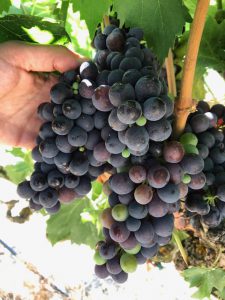


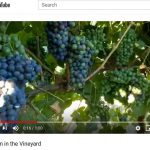
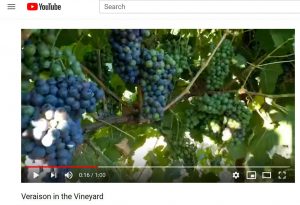
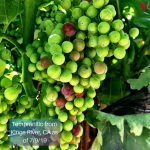
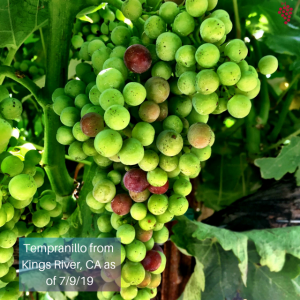



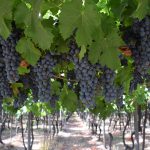

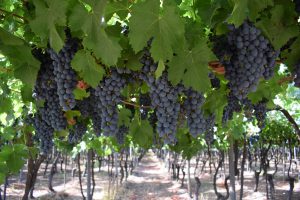
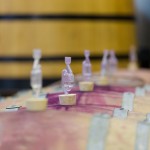



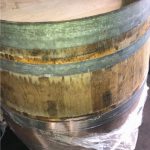
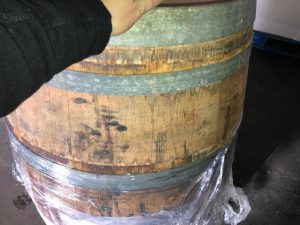
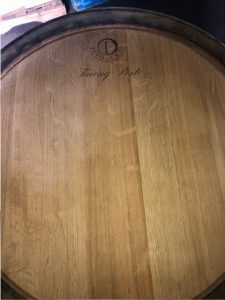
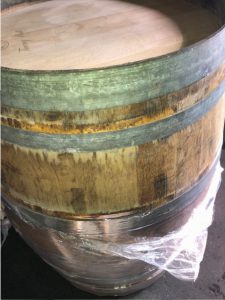
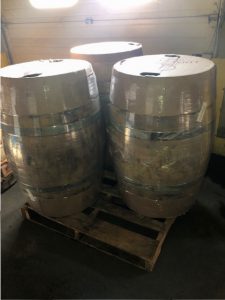

Recent Comments